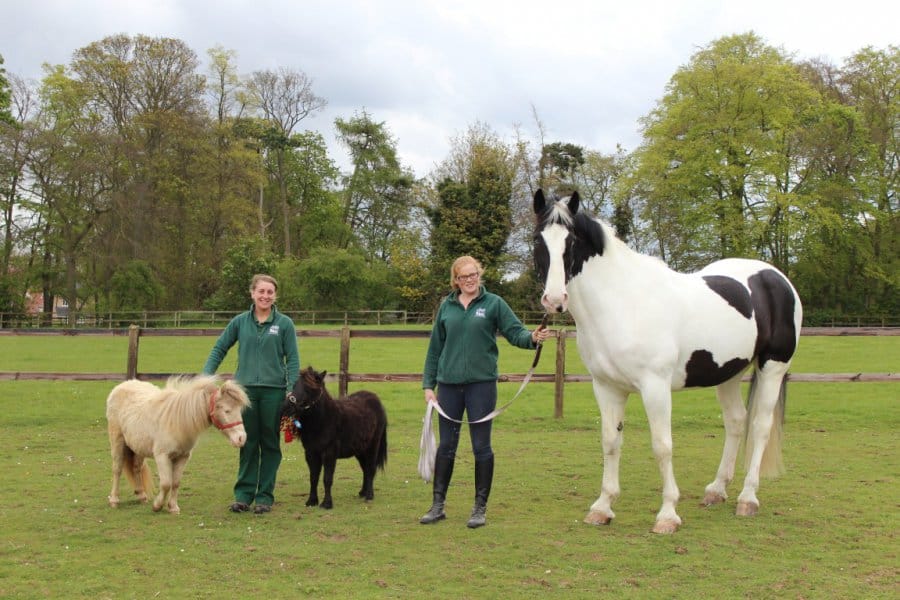A vet’s life: The art of diagnosing lameness

Laura Jones BVSc MRCVS is a Junior Clinician at the Animal Health Trust (AHT) Equine Clinic in Newmarket. In this regular diary series, she will share her insights about her job as an equine vet.
“It has been a good month to be an equine vet. That said, in my opinion every month is good, great in fact as I absolutely love my job. But we’ve had our fair share of long, hot, sunny days over the past few weeks and here at the Equine Centre of the Animal Health Trust (AHT) we are all sporting strong ‘boiler-suit tans’. I’m sure you’re all thinking it so I won’t deny that as I write this post, yes, it is indeed raining. However in that way I am lucky that my job entails a healthy mix of indoor and outdoor work so that with our eclectic English weather I have learnt to appreciate both scenarios equally!
Since December 2014 I have been working at the AHT as junior clinician at the Centre for Equine Studies. But that’s not the whole story; over the past few years I have become a bit of an AHT boomerang! I remember well when I first heard about the AHT. While studying at the University of Bristol I was shadowing an equine vet in my Worcestershire hometown when we went to a dressage yard to see a talented horse that hadn’t been performing as well as he usually did. After talking to the owner and looking over the rather handsome horse, the owner hopped on to show us what she meant. We watched the horse work in the outdoor school, feeling a little bit perplexed – because while we both agreed the horse wasn’t working well, we could not put a finger on exactly what it was… The vet quite confidently stated to the owner that the only thing to do would be to send the horse up to Newmarket to see Dr Sue Dyson. This mysterious case had caught my interest, as did the vet’s certainty that someone, namely Sue Dyson would actually be able to pinpoint what was going on!
That evening I took to Google and decided then that I must visit the AHT to find out more. After three weeks spent here in my final year I started to understand, and the challenging art of diagnosing lameness laid the foundations for my growing passion for this area of veterinary medicine. It was the most fascinating and exciting of places I had visited during my time at university, so I couldn’t quite believe my luck when I was offered the chance to work here as an intern for 12 months! It was the best possible start to my career and I had a great deal of fun along the way. I then went into private equine practice and, although I thoroughly enjoyed driving around the Surrey hills caring for our clients’ horses in all aspects of veterinary medicine, I jumped at the thought of returning yet again to the AHT to pursue my passion of poor performance and lameness diagnostics.
Part of my role is to assist senior clinicians in all aspects of lameness and poor performance diagnostics (this is the part when I hope it’s sunny). This typically includes physical examination, and evaluating the horses moving in hand, lunged on both soft and firm surfaces, and when ridden or sometimes even driven. Next we typically perform diagnostic nerve blocks to determine the location of pain causing the lameness or poor performance problems. We need to try to find out exactly what has been injured or is abnormal in those areas, which brings me onto the second part of my job, being responsible for imaging (the part for which I don’t mind what the weather has decided to do).
We use imaging to look inside the horse: the bones, joints and soft tissues (tendons, ligaments and muscles). We have a range of imaging techniques available and which ones we use depends upon each individual case. We can acquire radiographs (x-rays), perform ultrasonography, nuclear scintigraphy (‘bone scan’) and MRI (either in our standing unit or under general anaesthesia). When I’m not outside with a horse or sitting in a dark room with the blinds tightly shut looking at images, I am involved in research, which is a huge part of what we do here at the AHT. Expanding our knowledge and understanding of diagnosing, treating and preventing problems in horses is hugely exciting and rewarding, even making all the number crunching it involves worth every long minute!
Great, so now I’ve done the ‘who I am and what I do’ part (being new to the blogging scene in all senses I googled what to do and this is what I was told to start with. Tick!). Now onto the exciting bit; over the coming months I will be sharing with you what goes on behind the white gates of the AHT!”
Laura






